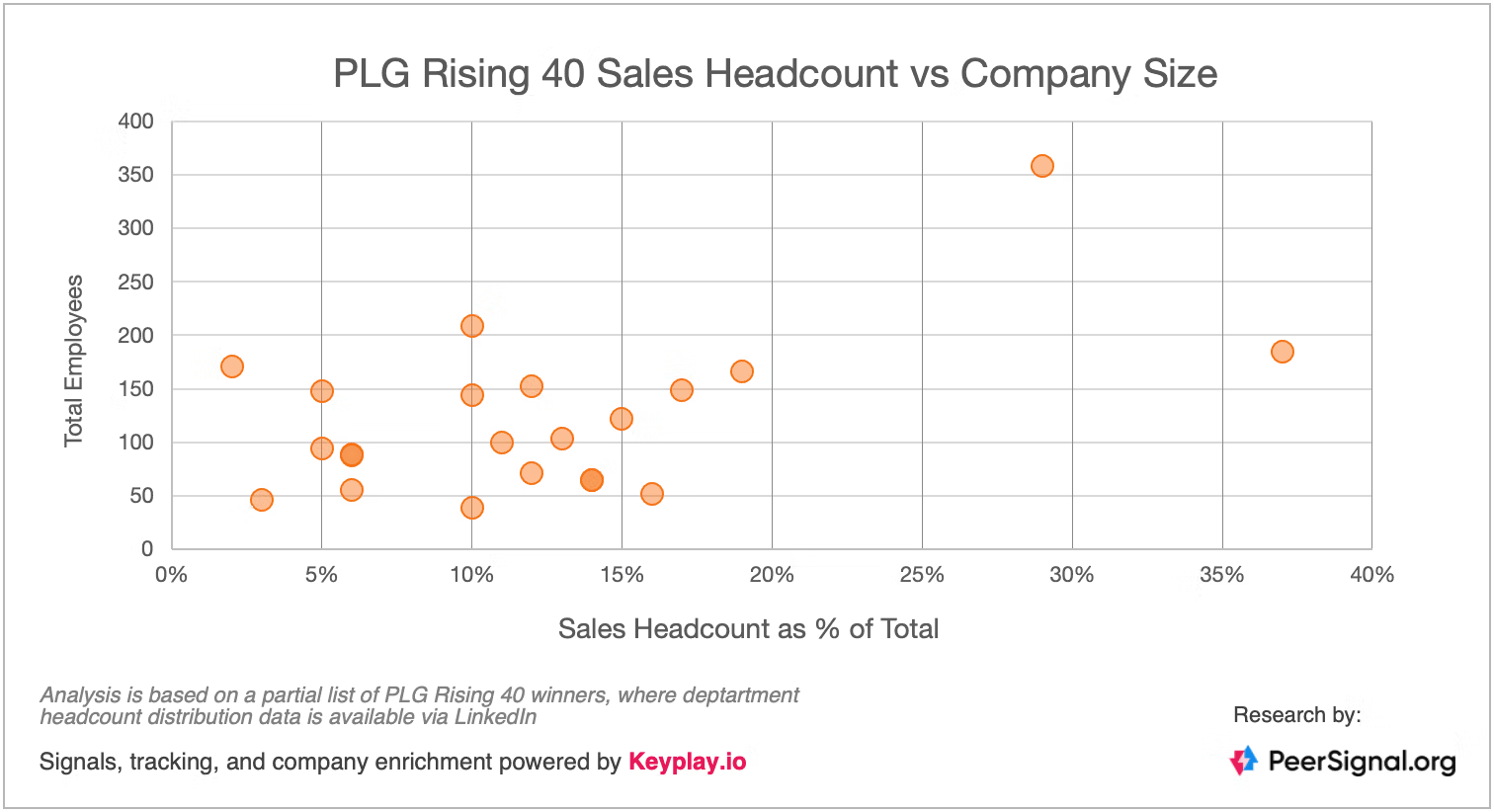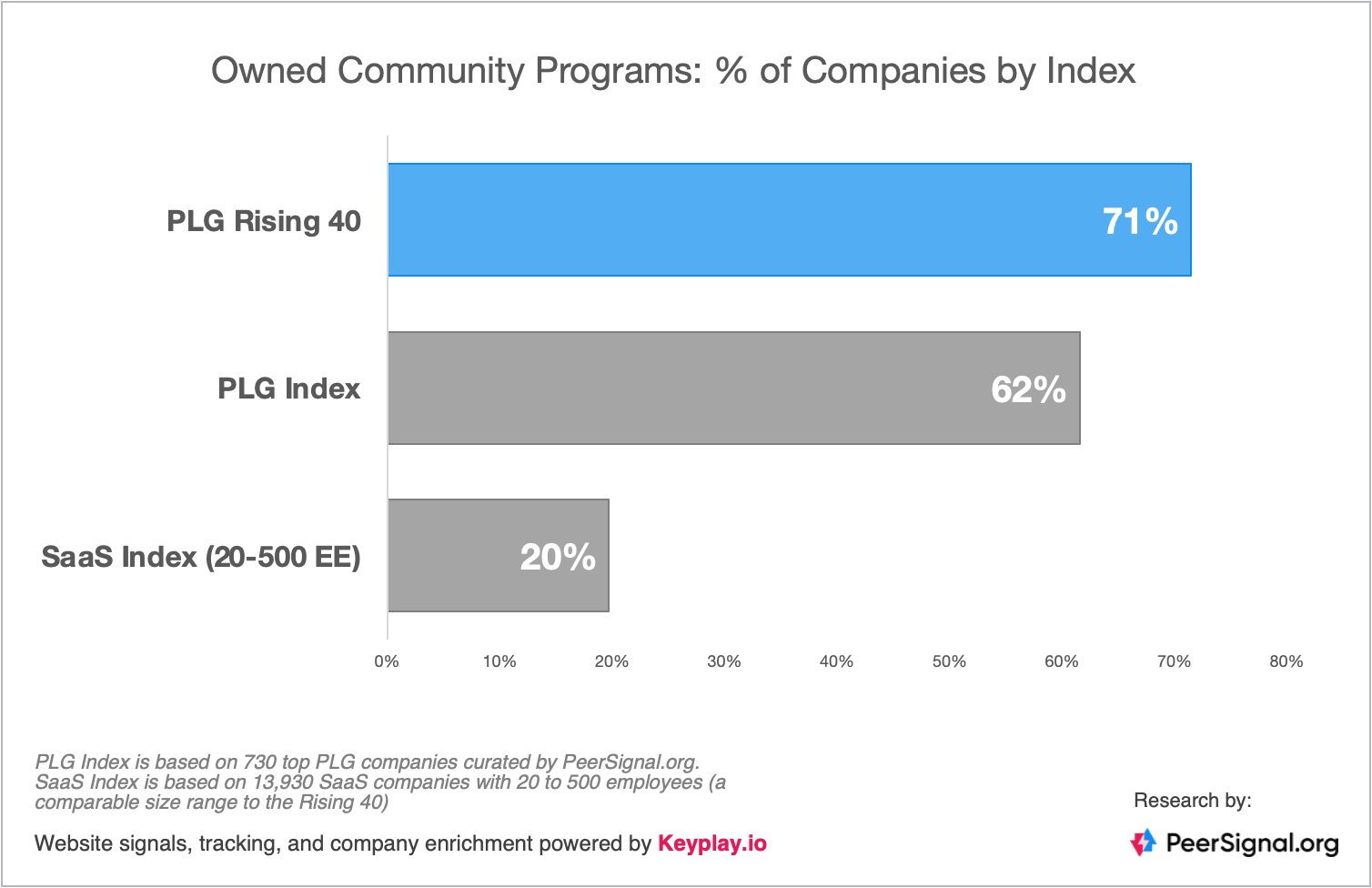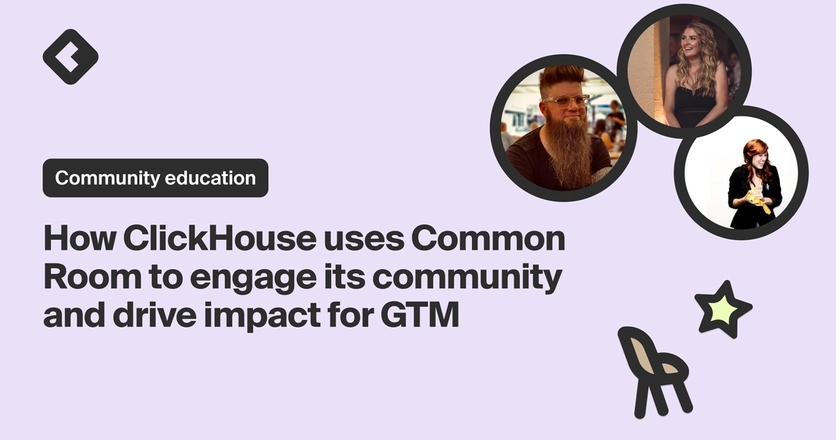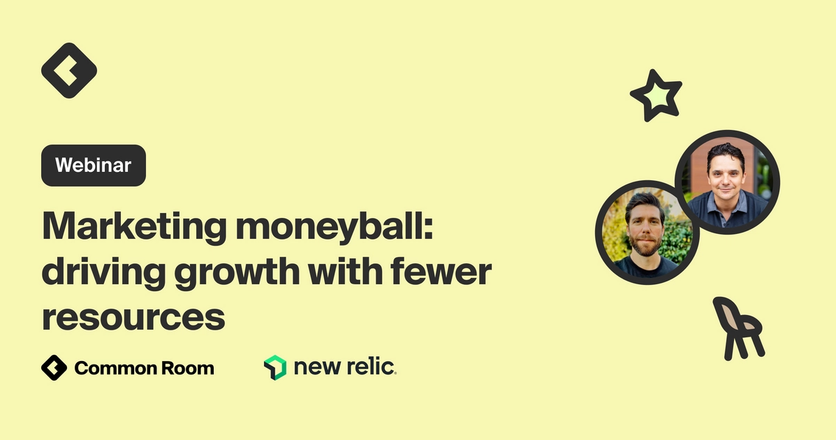What the fastest-growing PLG companies have in common: patterns from Keyplay and PeerSignal [VIDEO]
Product-led growth (PLG) is now the norm in the B2B SaaS world, but it’s not enough to let your product do the talking.
Today’s fastest-growing PLG companies have a big bag of tricks that goes well beyond self-service sign-ups, as evidenced by the 2023 PLG Rising 40 Awards.
Common Room’s COO Jake Randall talked about that and much more with Adam Schoenfeld, CEO and co-founder at Keyplay, and Camille Trent, Director of Content & Community at PeerSignal, in our recent event: Putting the "G" in PLG.
Here are three of the top takeaways from that conversation, including:
- Why product-led growth doesn’t mean getting rid of your sales team
- How community throws fuel on the PLG fire
- Which PLG strategies market leaders rely on
1. PLG leaders invest in sales pros
There’s a common misconception about product-led growth companies. Namely, that they don’t have salespeople.
The truth is, while many PLG companies start as strictly self-service, they tend to invest in sales teams as they grow.

Here’s why: Credit card transactions don’t bring in enough revenue to power sustainable growth (not to mention the fact that PLG products actually have lower conversion rates than sales-led products).
It turns out a human touch (that is, sales reps) are still the best way to reel in enterprise deals and scale revenue.
“Generally, as [PLG companies] get bigger, they invest more in sales,” Adam said. “They're bringing in a few reps even really early on.”
It’s common for PLG companies to use sales teams to convert product-qualified leads into opportunities and deals, especially at the enterprise level. Research reveals that 69% of the fastest-growing PLG companies have an enterprise offer to complement their product-led growth motion.
“If you have a single-player mode where an individual inside of a company can sign up and swipe their card, that's great,” Adam said. “But a lot of times what they want to do is parlay that into a CIO-, CMO-, or company-level purchase, and a lot of times it’s just impossible for that to happen on its own.”
2. Community powers PLG
PLG companies are more likely to have user communities than other SaaS companies. That goes triple for the fastest-growing ones—they’re 3.5 times more likely to have a community than their peers.

“It's such a powerful flywheel if you get it working,” Adam said. “It doesn't just impact acquisition, it can help at every part of the journey.”
But it’s important to understand what “community” means. It’s not just a company-owned Slack forum—it’s everywhere your customers (and potential customers) are.
“I think we get stuck on, ‘A community is this structure—it's a Slack group,’” Adam said. “But if you think of community with a capital ‘c’, it's the people you want to serve. Or the community already kind of exists, and then it's like, what are the mechanisms you're going to use as a company to get involved in that?”
In many ways user communities are a complement to search engine optimization—they’re how modern buyers discover and research products.
“A decade ago, it was HubSpot saying inbound marketing, and it was primarily SEO that you could do if you're bootstrapped,” Camille said. “You couldn't do paid ads, it was too expensive. And I think this is just another way to do inbound, if you think about it that way.”
3. Free trials and freemium products aren’t mutually exclusive
PLG is synonymous with free trials and freemium business models. The question many companies face is: Which one should I choose?
“I really think that you have to go from first principles about who is your buyer, what's the complexity of your product, and what's the way that it gets used and bought,” Adam said.
Free trials are popular because they create a sense of urgency. They also make sense from a unit economics standpoint.
But if your product is complicated, a free trial may do more harm than good. With a freemium model, users have more time to learn your product and understand its value.
On the other hand, if you have a product that’s expensive to run, you might not be able to justify a freemium model. Not many companies can afford to ride out a freemium business model that costs more than it makes for extended periods of time.
Many PLG companies use a reverse trial, which is essentially a hybrid of a free trial and freemium product.
“You have a free forever plan, but when you sign up on the free tier, you get put into premium on a trial,” Adam said. “So instead of it just being a trial that ends and you upgrade, when your trial ends, you revert back to the free tier. Which is a really nice way to give people the full power of what you do and try to convert them on that.”
Today’s PLG leaders don’t view their business strategies as binary choices. They mix and match models and switch between user-led and sales-led tactics.
“A recurring theme with modern PLG companies is that they're not thinking one or the other,” Camille said. “They're thinking about the full buyer journey and how they can cater to that. [...] It's really this holistic thinking that seems to be the common theme between the winners.”
Product-led growth isn’t a set-it-and-forget-it strategy. It requires human-led touch, supporting ecosystems, and informed experimentation.
Make sure you have the right tools for the job.
Upgrade your product-led growth strategy with Common Room
Ready to see how Common Room helps you unlock the value of your digital interaction, product, and customer data?
We think you'd like these

Your customers are your cheat code: customer marketing tips from Apollo.io
Nov 21st, 2023·5min read
How ClickHouse powers community and business performance using Common Room
Jul 7th, 2023·10min readCommunity
How New Relic uses marketing moneyball to move the needle
Jun 22nd, 2023·7min read
Put signal-based prospecting on autopilot
Jul 25th, 2024·4min readProduct
